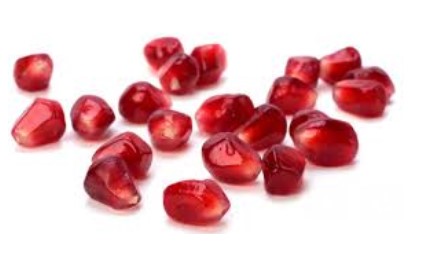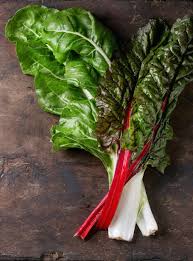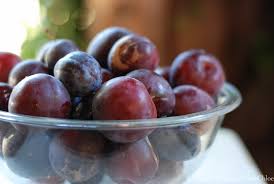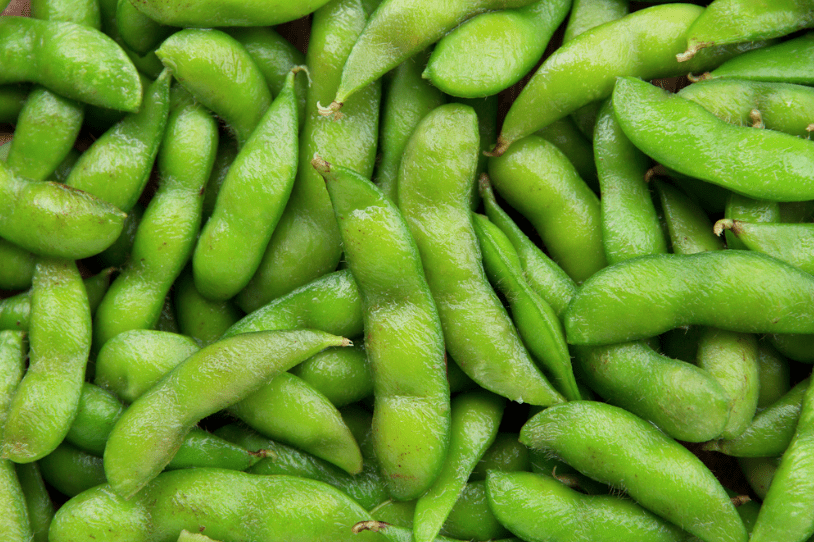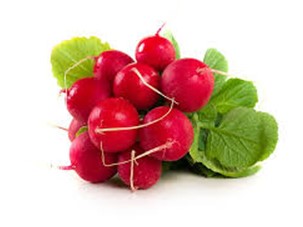Some things arrive quietly. They sneak slowly, behind the scenes – but not like thieves at night, they sneak shyly, in waves, sometimes taking one step forward and two steps back, in a confusing manner.
Once they are noticed, they are already here, something has already begun, it arrived, something has happened and we try to figure out when it actually started, but we can’t. Such is autumn, for example.
If we would happen to meet in the middle of the day today and I would tell you that autumn has already begun its journey towards the center of the stage on the calendar, you would probably think I had spent too much time in the sun, given the recent heat wave plaguing our little country.
But actually, the summer solsticeis behind us and Sukkot is just around the corner, although Rosh Hashanah is obscuring its view on the calendar. This year we are all more distracted than usual – in addition to the regular home-work-family matters we must deal with existential worries such as the issue of “life with the Corona Virus”.
We can forgive ourselves if we did not notice the fresh cool nights and the ripe pomegranates on the trees.
The pomegranate is a special fruit. First of all, it grows upside down – with it’s “crown” pointing downwards.
Most of the fruits are attached to the tree with what appears to be their top, except for the pomegranate, whose crown faces downwards. Beyond that, I am not acquainted with any other fruit that requires meditation skills in order to eat it.
I admit, I also sometimes feel like scooping a handful of pomegranate seeds and stuffing my mouth with them, but I'm too lazy to peel (if you feel the same and still want to eat a pomegranate – it can also be squeezed… it's not like eating the fruit itself, but better than not eating it at all… nowadays there is a variety of kitchen gadgets that promise to make the job easier. If you are a pomegranate lover but less enjoy the accompanying process, you might consider adding one to your kitchen collection).
The pomegranate is one of the fruits with which our country is blessed. Since it is here from ancient times, plenty of evidence indicate that it was loved by the people who lived here at a time when it was probably a little cooler in the country: not only does it appear on mosaics discovered in archeological excavations and on ancient jewelry, but it is also mentioned in the Bible and is related to the abundance of the Holy Land.
There is a prophecy that describes the days of destruction by explaining that the olive, the fig and the pomegranate in the land will cease to bear fruit.The pomegranate is associated with abundance (easily understandable) as well as with fertility and wisdom. Pomegranates were used to decorate the fringe of the high priest's coat and the pillars of the first temple. Today they decorate Torah scrolls.
Pomegranate has received a lot of attention in recent years, thanks mainly to scientific studies which prove its contribution to maintaining health as well as pointing to its rich nutritional values.
Both the peel and the fruit contain poly-phenol-tannins. If you are familiar with these termsfrom the context of wine, you are right. And also – pomegranates are used to make a fine port wine. Some studies have shown that eating pomegranates raises the level of antioxidants in the body that fight a number of diseases – inhibit the development of many types of cancer cells, prevent adverse effects caused by “bad” cholesterol and inhibit the development of arthritis.
Some studies also indicateimprovement of the immune system and protection against infections. For those who are less inclined to determine their diet according to the content of scientific research – the pomegranate is a local, seasonal fruit, rich with vitamins and minerals, kind of like a “local superfood” (and also a major component in cosmetics). All of which are great reasons to eat it. And it's delicious, too, of course.
To health!
Yours,
Maggie's Garden Team
Forecast:
In the ORGANIC vegetable baskets we expect (draft only):
Cucumber
Tomato
Lettuce
Potato
Beet
Eggplant
Pumpkin
Parsley
Swiss Chard
The Large organic vegetable baskets also include:
Spinach
Cohlrabi
Coriander
In the ORGANIC fruit baskets (NEW – Increased variety, price – 70 Shekels)
Grapes
Dates
Pears
Personal watermelon
The large ORGANIC fruit baskets also include: ( NEW – Increased variety, price -100 Shekels)
Pomegrenate
Mango
The ORGANIC Green Basket:
Leek
A kind of lettuce
Celery
Dill
Green onion
Sprouts
Kale
Basil
The thorns on the leaves of the cactus are visible, but those on the fruit are much less so. They are responsible for the many people walking around the country during the summer season, probing their palms, pulling out thorn after thorn.
In addition, it seems that the cactus is part of the typical Israeli landscapes, and indeed to this date it can be seen in most areas of the country (especially now, when the fruit is at it’s peak and small groups of cars are gatherednear bunches of cactusin an attempt to pick the fruit).
The cactus is not one of the seven species, שבעת המינים. It was not here in biblical times, there are no mosaics adorning broad-leaved cacti on the floors of ancient synagogues, nor will you find jewelry from the days of Jesus in the shape of sabra. Actually, this all makes sense, because it is a cactus.
Just like all it’s fellow cacti, it came from America. (Mexico takes pride in her cacti and displays the cactus on its flag.) From America it migrated to Spain, and by courtesy of the conquerors – also to the Mediterranean basin.
The cactus enjoys the Israeli climate, relatively speaking – it does get along with the amount of irrigation it receives (the origin of the name “Sabra” is in the Arabic word “tsabar”צבר- meaning patience.
The Israelis adopted the “sabra” as a symbol of the common Israeli, which is thorny and rough on the outside and rather sweet and soft on the inside (I would not necessarily describe the typical Israeli as patient, but maybe they are of a different specie). However, the climate here does not allow cacti seeds, the same seeds that creak between our teeth when eating the fruit, to germinate on their own when they meet the ground.
This is both bad news (for a cactus – because it depends onhuman assistance to reproduce, often in order to create a natural thorny barrier that is impenetrable by animals as well as humans – or at least some cactus leaves that will reproduce vegetatively.
In fact, these are not leaves but branches, but it is clear why it is easy to get confused) in terms of maintaining the specie. It is also good news – for the other growing species in our country, which are not threatened by this invasive specie, since its natural reproduction is limited.
The first to commercially grow Sabrain Israel, aka prickly pear, were the Ottomans, who used the fruit to produce a scarlet colored dye from them. Today, prickly pears are grown in agricultural farms, for local consumption as well as export –at a scale of several dozen tons a year.
In the wild, the peak of the season is just before the end of summer, but on the farm it is ripe for several months longer. The fruit is rich with vitamin C, magnesium and antioxidants.
It is considered beneficial for digestion, counteracts the development of cancer cells in the stomach and digestive system, improves the body's ability to reduce cholesterol levels and also balances sugar levels.
How do we deal with the thorns? With fire and water and a knife: hold the fruit with a pair of tongs and pass through the flame for a few seconds, soak in water and mix with a spoon (so that the fruits bump the sides of the bowl and each other causing the thorns to fall out), or simply lay on a cutting board, Hold in place with a fork, and cut both ends off with a knife.
You can then make a shallow groove in the skin and peel it off the heart of the fruit. By the way, cacti leaves can also be used, although they are not nearly as popular as the fruit: young leaves can be peeled, diced and soaked for a day or two in water to remove the mucous membranes. These can be added fresh to a salad, pickled or even cooked.
To health!
Yours,
Maggie's Garden Team
Forecast:
In the ORGANIC vegetable baskets we expect (draft only):
Cucumber
Tomato
Lettuce
Potato
Onion
Eggplant
Pumpkin
Parsley
The Large organic vegetable baskets also include:
Raddish
Sweet Potatoe
Coriander
In the ORGANIC fruit baskets (NEW – Increased variety, price – 70 Shekels)
Grapes
Dates
Pears
Melon
The large ORGANIC fruit baskets also include: ( NEW – Increased variety, price -100 Shekels)
Half watermelon
Nectarine
The ORGANIC Green Basket:
Leek
A kind of lettuce
Celery
Dill
Green onion
Sprouts
Green Beans
The thorns on the leaves of the cactus are visible, but those on the fruit are much less so. They are responsible for the many people walking around the country during the summer season, probing their palms, pulling out thorn after thorn.
In addition, it seems that the cactus is part of the typical Israeli landscapes, and indeed to this date it can be seen in most areas of the country (especially now, when the fruit is at it’s peak and small groups of cars are gatherednear bunches of cactusin an attempt to pick the fruit).
The cactus is not one of the seven species, שבעת המינים. It was not here in biblical times, there are no mosaics adorning broad-leaved cacti on the floors of ancient synagogues, nor will you find jewelry from the days of Jesus in the shape of sabra. Actually, this all makes sense, because it is a cactus.
Just like all it’s fellow cacti, it came from America. (Mexico takes pride in her cacti and displays the cactus on its flag.) From America it migrated to Spain, and by courtesy of the conquerors – also to the Mediterranean basin.
The cactus enjoys the Israeli climate, relatively speaking – it does get along with the amount of irrigation it receives (the origin of the name “Sabra” is in the Arabic word “tsabar”צבר- meaning patience.
The Israelis adopted the “sabra” as a symbol of the common Israeli, which is thorny and rough on the outside and rather sweet and soft on the inside (I would not necessarily describe the typical Israeli as patient, but maybe they are of a different specie). However, the climate here does not allow cacti seeds, the same seeds that creak between our teeth when eating the fruit, to germinate on their own when they meet the ground.
This is both bad news (for a cactus – because it depends onhuman assistance to reproduce, often in order to create a natural thorny barrier that is impenetrable by animals as well as humans – or at least some cactus leaves that will reproduce vegetatively.
In fact, these are not leaves but branches, but it is clear why it is easy to get confused) in terms of maintaining the specie. It is also good news – for the other growing species in our country, which are not threatened by this invasive specie, since its natural reproduction is limited.
The first to commercially grow Sabrain Israel, aka prickly pear, were the Ottomans, who used the fruit to produce a scarlet colored dye from them. Today, prickly pears are grown in agricultural farms, for local consumption as well as export –at a scale of several dozen tons a year.
In the wild, the peak of the season is just before the end of summer, but on the farm it is ripe for several months longer. The fruit is rich with vitamin C, magnesium and antioxidants.
It is considered beneficial for digestion, counteracts the development of cancer cells in the stomach and digestive system, improves the body's ability to reduce cholesterol levels and also balances sugar levels.
How do we deal with the thorns? With fire and water and a knife: hold the fruit with a pair of tongs and pass through the flame for a few seconds, soak in water and mix with a spoon (so that the fruits bump the sides of the bowl and each other causing the thorns to fall out), or simply lay on a cutting board, Hold in place with a fork, and cut both ends off with a knife.
You can then make a shallow groove in the skin and peel it off the heart of the fruit. By the way, cacti leaves can also be used, although they are not nearly as popular as the fruit: young leaves can be peeled, diced and soaked for a day or two in water to remove the mucous membranes. These can be added fresh to a salad, pickled or even cooked.
To health!
Yours,
Maggie's Garden Team
Forecast:
In the ORGANIC vegetable baskets we expect (draft only):
Cucumber
Tomato
Lettuce
Potato
Onion
Eggplant
Pumpkin
Parsley
The Large organic vegetable baskets also include:
Raddish
Sweet Potatoe
Coriander
In the ORGANIC fruit baskets (NEW – Increased variety, price – 70 Shekels)
Grapes
Dates
Pears
Melon
The large ORGANIC fruit baskets also include: ( NEW – Increased variety, price -100 Shekels)
Half watermelon
Nectarine
The ORGANIC Green Basket:
Leek
A kind of lettuce
Celery
Dill
Green onion
Sprouts
Green Beans

